Ryan Hall's Blog, page 340
October 10, 2015
13-Year-Old Runs Rock ‘n’ Roll Brooklyn to Support Aunt
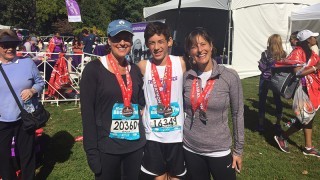
Gail (left), Matt and Laura.
If you ask Matt Ross if he’s much of a runner, he shrugs his shoulders. But his shrug is just his humility shining through, because the 13-year-old Upper East Side resident is, without a doubt, a true runner.
After all, he completed his first half 13.1-mile run today at the inaugural Rock ‘n’ Roll Brooklyn Half Marathon. And Ross didn’t do it for personal gain or for that flashy finisher medal; he did it for someone else as part of the “G-Force” Team in Training squad. He did it for his aunt, Gail Kurz, who has been diagnosed with lymphoma.
Thanks to a service project as part of his Bar Mitzvah in May, Ross was able to help raise a staggering $35,000 for the team. “I ran as fast as I could today,” Ross admitted afterward. “It was really tough—especially the hills at the end. But I made sure I finished it.” But Ross didn’t do it alone; he had the support with his teammates. Gail accompanied him as well as his mother, Laura.
“It was pretty emotional out there,” Gail recalled holding back tears. “I felt joy, but I also felt gratitude for what Matt and the whole team was able to do to help.”
Ross’ mother, Laura, said she really felt the dollars they raised helped push the research that is treating Gail. “I really felt the personal impact of this race,” she said.
Several hours after the arduous race, Matt sat on the pristine field in front of the Team in Training Tent. He was wearing a U.S. Soccer jersey and says he worked really hard for this race, running up to 7 miles at one time in Central Park to prepare for the race’s challenging terrain in Prospect Park. “I can’t believe I feel so good now,” he admitted. When asked if he likes to race Matt nods in agreement. “Yep. I’m hooked. When I’m 18, I’m going to give the marathon a try.”
Matt Ross’ efforts on Saturday embody the spirit of Team in Training, which proudly places its “Together we can” mission on banners in front of its finish-line tent. The flags flap in the crisp breeze reminding everyone that service to others takes true solidarity.
“I’m proud of Matt,” he mother says looking at him approvingly with a broad smile on her face. “He really loves his family and he showed it today.”
The post 13-Year-Old Runs Rock ‘n’ Roll Brooklyn to Support Aunt appeared first on Competitor.com.
October 9, 2015
Video: Watch Nike’s Inspiring Tribute to Back-of-the-Pack Joggers
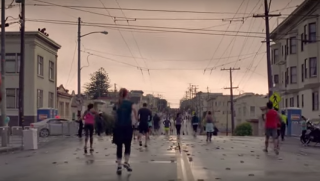
Check out Nike’s new inspiring TV commercial that celebrates the determined joggers who do whatever it takes to get to the finish line. Called “Last,” the 60-second spot debuts on Oct. 11 (to coincide with the Chicago Marathon) and offers an encouraging message through the point of view of back-of-the-pack participants shuffling and walking in a quest to finish a big city marathon. “You are not a runner,” says a female voiceover. “You are especially not a marathon runner. But at the end of this, you will be.”
Set to the 1964 song “Every Little Bit Hurts” by Aretha Franklin, it is a sequel or sorts to Nike’s 2012 commercial known as “Jogger,” a spot about an overweight kid who is following the mantra of “Find Your Greatness.” Both commercials were produced by the same creative teams—the Wieden + Kennedy agency of Portland, Ore., and Park Pictures of London—and each one promotes the idea that anyone can lace up their running shoes, put themselves through months of training and reach the goal of finishing a marathon.
RELATED: A FREE Beginner’s Half Marathon Training Plan
RELATED: A 4-Month Marathon Training Plan
The post Video: Watch Nike’s Inspiring Tribute to Back-of-the-Pack Joggers appeared first on Competitor.com.
Without Pacemakers, Chicago Marathon Becomes Wide Open Race
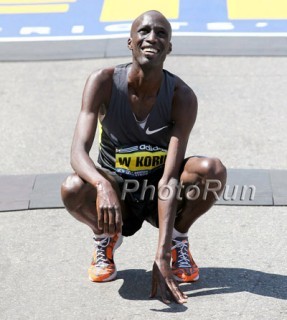
Wesley Korir has won without pacemakers, but much of the field doesn't have much experience. Photo: PhotoRun.net
(c) 2015 Race Results Weekly, all rights reserved. Used with permission.
CHICAGO — With a back to basics approach this year, race director Carey Pinkowski announced on August 26 that pacemakers would be eliminated from this year’s Chicago Marathon, hoping to refocus fan and media interest on head-to-head racing instead of fast times and record-breaking. Chicago now joins the Boston Marathon and New York City Marathon among the commercial events of the Abbott World Marathon Majors which no longer employ pacemakers.
“Here at Chicago we have such a great tradition of athletic performance, head-to-head performance,” he told the media here today. “I think we got away from what the essence of what competition is. We’ve had historic performances from head-to-head competitions. So, we’ll take a look on Sunday and we’ll see.”
But Pinkowski’s move has been an unsettling one for some of the event’s elite athletes. Pacemaking has become so pervasive in top marathons that some athletes have never run a race without them, and aren’t quite sure how best to approach the race.
“I’ve never run that way, but we’ll do our best,” said 22 year-old Birhane Dibaba of Ethiopia, this year’s Tokyo Marathon champion who boasts a 2:22:30 personal best. “Ever since I’ve been running major races I’ve never run without a pacemaker.”
She’s not alone. For 25-year-old Lucas Rotich of Kenya, the situation is the same. He’s run three marathons—twice in Hamburg and once in Amsterdam—and has never competed without the benefit of pacers. He seemed perplexed about what might be an appropriate strategy for Sunday’s race. He said he’d be willing to push the pace, but only if some of his rivals would, too.
“I think for me this is my fourth marathon, so I don’t know know the distance so much without pacemakers,” he told Race Results Weekly. He paused and added: “There are no pacemakers in the Olympics. No pacemakers in the championships. It doesn’t matter if we cooperate, the athletes.”
In a mild disagreement with his manager, Michel Boeting, Rotich said he thought that the race would have pacemakers when he agreed to run, saying that he only found out about it by reading a running message board on the Internet. Boeting reminded him of a conversation where he told him that it was “looking like” Chicago wasn’t going to use pacers this year. Rotich wasn’t sure.
“Midway, they decided that there were no pacemakers,” Rotich insisted. “It didn’t change my mind or my progress. If there are pacemakers or not pacemakers, it doesn’t change my plan. I am focusing on two things: one is to run a good time and to win the race.”
Another Kenyan, Dickson Chumba, who is coached by Italy’s Gabriele Rosa, said he had already decided his best course of action on Sunday: key off of a top contender.
“I follow Kitwara and the other guys,” he said, referring to the fastest man in the field, Kenya’s Sammy Kitwara, who has a 2:04:28 personal best. Kitwara finished second here last year. “I know Kitwara.”
But would Kitwara lead? He, too, said he’d never run a marathon without pacemakers.
Ethiopia’s Mulu Seboka offered a more nuanced point of view. She has run marathons with and without pacemakers, and said they could be equally satisfying.
A veteran of 33 marathons (with nine victories), Seboka pointed out that although she had run faster with pacemakers, she had also won without them. For instance, at the 2014 Dubai Marathon, she won the race in 2:25:01 when pacemakers were not used in the women’s race, but only finished sixth in this year’s Dubai race when she ran her personal best 2:21:56 with the aid of male pacers.
“It’s good if there is a pacemaker, it’s also good if there isn’t,” said Seboka through a translator. “I’ve had the experience before so it’s not a problem.” She continued: “Both are good. Winning is good, but being able to improve my personal best and run a fast time was also good.”
Wesley Korir, the 2012 Boston Marathon champion, was unambiguous about his position: a race without pacemakers was better for him. In today’s press conference—where he gave a rousing, impromptu speech on the sport’s need to increase anti-doping efforts—he could hardly contain his glee. When he won Boston and Los Angeles (in 2009 and 2010), there were no pacemakers.
“I looked at all of my history, and all of the races that I won had no pacemakers,” Korir said. “I’m excited.”
The post Without Pacemakers, Chicago Marathon Becomes Wide Open Race appeared first on Competitor.com.
6 Marathon Tapering Tips From Olympian Lee Troop
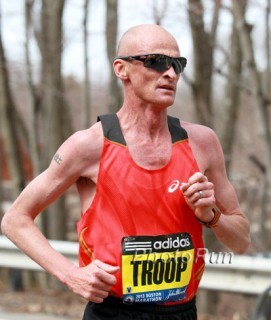
Photo: PhotoRun.net
Lee Troop of Boulder, Colo., is a three-time Australian Olympian with a 2:09:49 personal best in the marathon. Known as “Troopy” in running circles, the 42-year-old owns Fleet Feet Sports in Boulder and also serves as the high performance coach for the Boulder Track Club, where he mentors reigning U.S. cross country champion Laura Thweatt, 2:13 marathoner Sean Quigley and others.
We caught up with him recently to talk about the most important things you need to keep in mind when tapering for a marathon to ensure you arrive at the starting line ready to have a great race.
1. Listen to your body.
“Over the many weeks training, you will have pushed your body to its limit and sometimes you don’t realize how close you are to that edge until your start tapering,” Troop explains. “If you’re tired, try and get more rest, hydrate and eat well. If a light massage is needed, and you are used to having them, then get one. By listening to your body, you can help it recover better.”
2. Avoid unnecessary treatment.
“Don’t get a deep massage or any other form of alternative treatment that you have never had done before unless you’re injured and it’s necessary to help get you to the start line,” Troop says. “Sometimes people think this is a great thing to do to help their body but it can do more harm than good in the short term, as it can stress the body more and take you a few extra days to fully recover from it.”
3. Don’t try to make up for lost training.
“Squeezing in extra volume or doing a harder session just to please your mind that you are ready is common with people that have missed some of their training due to illness or injury,” Troop explains. “Nothing extra you do from a training perspective in the taper will make you run better, but it can certainly ruin your chance of success if you do something so hard that you don’t recover from it.”
4. Maintain your diet.
“Changing diets and seeing results from them can take 2-4 weeks at a minimum,” Troop says. “Usually when individuals change a diet drastically, the body will need time to adapt and absorb it. Your body is already going through a lot as it tapers from all the hard training you have done and trying to get ready for the tough 26.2 miles that lay ahead.”
5. Hydrate. Hydrate. Hydrate.
“Runners who start to taper are not doing the normal volume or intensity that they would normally do, so then they don’t feel as thirsty or dehydrated,” Troop says. “Don’t fall into that trap of thinking that because you are not exercising as much, that you don’t need to hydrate, because you do. Twenty-six-point-two miles is hard enough. It’s only gets harder when you don’t have any water in your radiator!”
6. Mentally prepare yourself to dig deep.
“Through your training, you will have experienced some tougher periods where you had to really dig deep to complete those training sessions,” Troop says. “Recall those efforts, mentally prepare yourself and draw strength for what is ahead in your race. This will aid in your confidence that you are ready and prepared.”
RELATED: Tapering Dos and Don’ts For Marathoners
The post 6 Marathon Tapering Tips From Olympian Lee Troop appeared first on Competitor.com.
Joan Benoit Samuelson Celebrates 30th Anniversary of Record Marathon
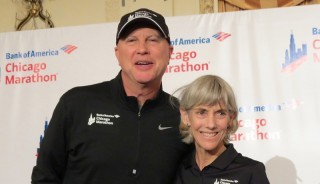
Joan Benoit Samuelson (right) and race director Carey Pinkowski in advance of the 2015 Chicago Marathon (Photo: David Monti/Race Results Weekly)
(c) 2015 Race Results Weekly, all rights reserved. Used with permission.
CHICAGO — Wearing her red and white Athletics West kit, 28-year-old Joan Benoit stepped to the starting line of the Chicago Marathon 30 years ago here this month as the first-ever women’s Olympic Marathon champion. She was simply known as “Joanie,” the plain-spoken New Englander from Cape Elizabeth, Me., whose 1-minute, 26-second Olympic victory in Los Angeles the year before captured the imagination of American sports fans and helped launch a still-growing boom in distance running for women.
But in that race here in 1985 she may not have been the favorite for victory. Six months earlier, Norway’s Ingrid Kristiansen had shattered the world marathon record, running 2:21:06 at the London Marathon, the first-ever sub-2:22 marathon by a woman. Kristiansen was on the starting line with Benoit (now Samuelson) as was Portugal’s Rosa Mota, the 1984 Olympic bronze medalist who would go on to win the Olympic title in 1988.
“It really has been one of my most favorite memories in the sport,” said Samuelson speaking to a small group of reporters here today. She continued: “Rosa was the third place finisher in the L.A. Olympics, the inaugural women’s Olympics. And then she want on to win the gold in Seoul. Ingrid at the time had the world’s best time, so it was a big-time field.”
Steve Jones went out hard in the men’s race, dusting the field by nearly a minute to win in 2:07:13, just one second off of Carlos Lopes’s world record. But the women ran hard, too. Kristiansen and Samuelson—and a few brave amateur men—went out at a sub-2:20 pace. Mota chose to hang back.
“I just remember running head-to-head with Ingrid,” said Samuelson, who now wears her silver hair shoulder-length. “It was a gray day, and I was just hoping she would break at 10 (miles). I said I will try to hold on to her until 13, and she started to fall off the pace a little bit at 10.”
Samuelson took over the lead, but Kristiansen stayed close. She went through 17 miles on a 2:20:12 pace, which was too hot for Kristiansen.
“I just said, oh my God, you’ve just got to stay strong and go for it,” Samuelson recounted.
Samuelson left Kristiansen, pulling away to run a solo 2:21:21, shattering her own American record of 2:26:12, and even surpassing her American “best” of 2:22:43 set at the 1983 Boston Marathon (that course isn’t eligible for record-setting). Her mark stood for over 17 years until Deena Kastor broke it in the 2003 London Marathon with a 2:21:16.
“To be able to hold on in that race and come up on top was almost as special as the Olympic win,” said Samuelson, who admitted that she had made an error in her preparations and perhaps could have run faster.
“I do have one regret,” she said. “And that was I didn’t look at the race course before I ran. I never look at marathon race courses before I run the actual race, because what I don’t know can’t hurt me. Had I known where the finish line was…because all of a sudden, there was the finish line, and I still had something in the tank.”
On Sunday here, Samuelson hopes to run the race, but a health problem will prevent her from trying to run her goal of 2:51:21, an extraordinary mark for a 58-year-old.
“I’ve been dealing with a stomach virus, so it will be a game-time decision,” Samuelson said. “My original thought was to run within 30 minutes of my original time 30 years ago, and I was on target to do so. As all marathoners walk or run a fine line, I was on that fine line three weeks ago, and started to fall apart a little bit. We’ll see if I’m well enough to cover the distance. That’s not my style, but it’s the 30th anniversary and it’s a big deal for me. I’ve worked hard.”
The post Joan Benoit Samuelson Celebrates 30th Anniversary of Record Marathon appeared first on Competitor.com.
October 8, 2015
Katie Morse: 6 Ways to Celebrate After the Chicago Marathon

Photo: Shutterstock.com
You trained, you ran and you crossed the finish line—now it’s time to celebrate! Read on for some of the best ways to celebrate in Chicago.
27th Mile Post Party
Chicago loves to celebrate. After finishing such an iconic event, plan to make a stop at the 27th Mile Post Party and celebrate with your fellow racers. This event is open to public and it has live music entertainment for racers over the age of 21. It will be held at Grant Park on October 13, from 9 am to 3:30 pm.
Explore the City
The Windy City has so much to offer and a mellow afternoon or day after your race is an ideal time to hang out in a park or stroll through a museum. Millennium Park, Lincoln Park Zoo and the modern wing at the Art Institute are some great starting points.
Bar Crawl
Celebrate your victory with a pint or two of beer. From the Sheffield’s Wine and Beer Garden, to Green Mill Cocktail Lounge there’s a place for everyone. The view in the bar at the top of the John Hancock building gives a different perspective of the 26.2 miles you just covered.
Sleep
Honestly, sometimes when I finish a race all I want to do is sleep. I make sure my hotel has the right amount of comfort and relaxation. Room service is always a nice touch—who doesn’t like to be pampered a little bit?
Eat like a Champ
After training so hard and finishing the marathon, pigging out on some quality food seems ideal. From the full slab of St. Louis-style ribs at Smoque to a delicious pan pizza at Peqoud’s Pizza, you’ll find plenty of options to satisfy post-Marathon cravings.
Enjoy the View from Willis Tower
America’s tallest building (formerly known as Sears Tower), delivers a bird’s eye view of the Windy City. Even better, you can take an elevator to the top!
The post Katie Morse: 6 Ways to Celebrate After the Chicago Marathon appeared first on Competitor.com.
Jessica Hofheimer: Flex Your Mental Muscles With a Mantra

Photo: Shutterstock.com
No matter how well you train your legs and your heart to run 26.2 miles, you can literally prevent yourself from having a good race if you haven’t prepared your mind to handle the stress. Moments when you will question your abilities, resilience and desire to keep moving forward are inevitable. In fact, it is quite possible that the greatest strength you can bring with you on marathon day is your positive self-talk. We are often persuaded by negative thoughts (or “doubt demons” as I sometimes call them) when the going gets tough. Learning tactics to help you believe in and cultivate the voice that says “I CAN” will make all the difference for you on race day.
One of the most effective tools for building your mental muscle is rooted in the development of mantras that remind us of our strength and encourage habits of positive thinking. Our internal dialogue is very powerful, and with positive and often simple choices we can combat the negative voices in our heads. We will believe what we tell ourselves!
Mantras are personal to each runner. Sometimes they are inspirational words rich with motivation, sometimes they are funny and sometimes they are just a distraction. They can be something you make up on your own, a quote from your favorite poem or a line from your favorite song. Find a few words and sentences that work for you, and draw upon them if you start to doubt your abilities on race day or for any challenging run. Above all else, remember why you started this journey, trust that the doubts and the pain are a part of the process and you will persevere!
Some examples of mantras that can be useful:
“I think I can. I know I can!”
“Breathe and believe.”
“Never ever, ever give up.”
“The only way out is through.”
“Make yourself proud.”
“I am healthy, I am strong.”
“Be here, be now.”
“This too shall pass.”
“I have put in the work. This is my victory lap!”
The post Jessica Hofheimer: Flex Your Mental Muscles With a Mantra appeared first on Competitor.com.
Trail of the Week: Sal Hollow Trail, Mammoth Cave National Park

Photo: Clinton Lewis
Our Trail of the Week feature is made possible through a partnership with Trail Run Project.
Mammoth Cave National Park is known for the longest cave system in the world—underground, of course. What’s less appreciated is the beauty above the cave, protected by the National Park Service, which features trails that runners love.
The Sal Hollow and Buffalo Creek Loop is a beautiful route nearly 11 miles in length. The Sal Hollow Trail is one of the most popular routes in the park that explores the Kentucky forest.
Set out from the Maple Springs parking lot and begin your adventure by catching the Sal Hollow Trail to the left. The first few miles are quite enjoyable, with a well-trodden path and enough twists and turns to keep things interesting. The forest varies from rather open with airy clearings to Jurassic Park overgrowth, where just finding the trail is fun. There are several small creek crossings and a few small waterfalls to explore just off-trail.
The midway point of the Sal Hollow Trail is the intersection with the Turnhole Bend Trail, around mile 3.8. That is the perfect spot to rest and take in a gel.
Continuing on the Sal Hollow Trail from that point becomes an adventure. The second half seems to be less used and more overgrown. The trail itself is mostly good, with typical roots and rocks, but there are more sections of swampy footing which tend to swallow shoes and/or be very slick. Especially note miles 5-6, that are a sustained rocky downhill. At the bottom of the hollow are a couple of creek crossings, then the trail heads uphill for a bit. Passing the Sal Hollow Campsite just past mile 6, the trail still trends uphill, but the running becomes much smoother and more fun as you approach the end.
The Sal Hollow Trail ends at mile 8 at the intersection with the Buffalo Creek Trail. Turn right on this trail for an easy recovery-welcoming pace back to the parking lot.
The Data
Miles: 10.8
Runnable: 96 percent
Singletrack: 80 percent
Average Grade: 3 percent
Max Grade: 22 percent
Total Ascent: 863 feet
Total Descent: -885 feet
Highest Elevation: 894 feet
For a closer look, check out the interactive map, data, photos and virtual run simulator courtesy of Trail Run Project:
The post Trail of the Week: Sal Hollow Trail, Mammoth Cave National Park appeared first on Competitor.com.
Coach Culpepper: Evaluating a Race
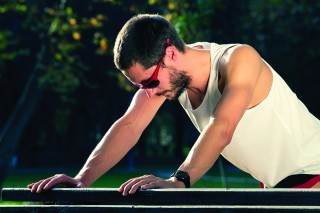
Photo: istockphoto.com
Every race is a little different. Sometimes it goes the way we hoped and planned, and other times we’re left feeling less than thrilled with the outcome. Regardless of whether you set a personal best or finish feeling disappointed and frustrated, it’s important to evaluate the performance as a whole. There are always race takeaways that you can learn from and apply moving forward.
The key is developing an evaluation template that allows you to review the entire experience from start to finish—not just the race itself, but the entire day and the days leading up to it.
The Good
I’ve noticed when a performance goes well, we often limit our review to simply what our watch reads and fail to look at all the other positive aspects that went into having a good day. Think about the entire experience and find patterns or methods that will help you duplicate those good days in the future: What you ate, how you slept, your pre-race routine, your hydration and how you managed the weather are all important considerations.
The Bad
When a race doesn’t go so well, it can be difficult to find any positive aspects. We get so focused on the clock, hitting a qualifying time or measuring ourselves against the competition that we can lose sight of the positive aspects of a poor performance. Take a step back, let the initial disappointment fade and then evaluate your performance with an open mind. This exercise may help expose what went wrong. Although they’re disappointing, we learn the most from poor performances and find a greater opportunity for growth.
The Takeaway
The goal is always to learn from your experience. When you take the time to properly evaluate your event you can see how your performance exposes or confirms your preparation. A race is not just about the pre-race routine, how you slept the night before, the morning meal or the race day hydration plan. Ultimately, all the training leading up to it is the biggest factor in determining your performance. By taking the time to evaluate your race, you will be able to reflect back on your training preparation and determine what went right, what went wrong and what adjustments you need to make for your next attempt.
RELATED: Coach Culpepper: 6 Mental Tips for Running Success
RELATED: Analyzing Your Race Performance is Key
The post Coach Culpepper: Evaluating a Race appeared first on Competitor.com.
8 Race-Day Gear Upgrades
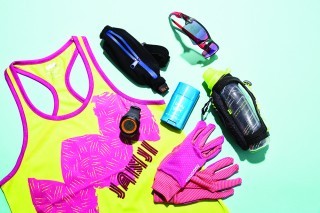
Photo: Scott Draper
Celebrate the hard miles logged while training for a goal race and spiff up your race-day look with some fresh accessories that will also combat cold weather, glaring sun, chafing or lost safety pins. On your mark, get set, go!
RELATED: 9 Dry Jackets for Wet Runs
Photo Gallery
1 of {count}
Back to Start
View Larger Image

Oakley PRIZM Road Flak 2.0 XL sunglasses, $170
Large, high-definition lenses give enhanced protection while making subtle surface changes more visible.
View Larger Image

Janji Kenya “High-Low” Singlet, $34
This mesh singlet with a subtle drop-tail hem delivers comfort and coverage. And with every purchase, a person in Kenya gets one year of clean water.
View Larger Image

Saucony Swift Glove, $24
Upgrade those basic black or white gloves with some stylish polka dots and stripes.
View Larger Image
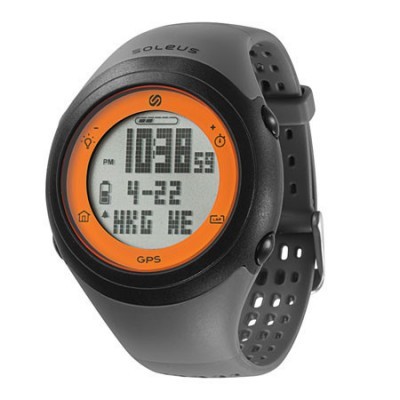
Soleus GPS Fly, $99
This affordable GPS watch provides distance, pace, splits and an 8-hour battery.
View Larger Image
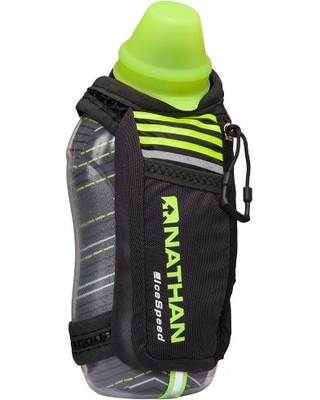
Nathan IceSpeed Insulated Handheld, $45
This insulated 18-oz. bottle and an anti-freeze bite valve prevent your hands and your hydration from turning to ice on cold days.
View Larger Image

SPIbelt Performance Belt, $26
This slim belt has four gel loops plus a weather- and sweat-resistant pocket that can hold an iPhone, car keys, salt tablets and beer ticket.
View Larger Image

Body Glide original Anti-Chafing Balm, $10
Don’t let chafing or blisters get in the way of a PB. Apply this wherever running “rubs you the wrong way.”
View Larger Image
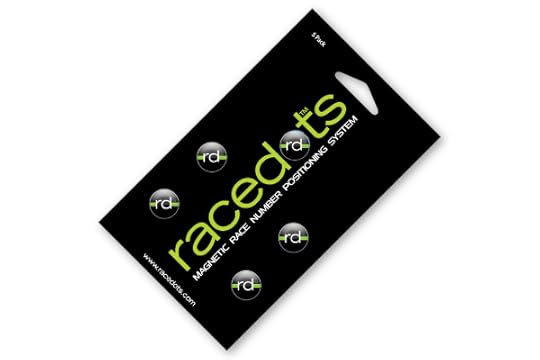
RaceDots 4-Pack, $20
RaceDots use powerful magnets for a secure hold on your race number without the pinholes.

More Galleries
The post 8 Race-Day Gear Upgrades appeared first on Competitor.com.
Ryan Hall's Blog
- Ryan Hall's profile
- 21 followers



